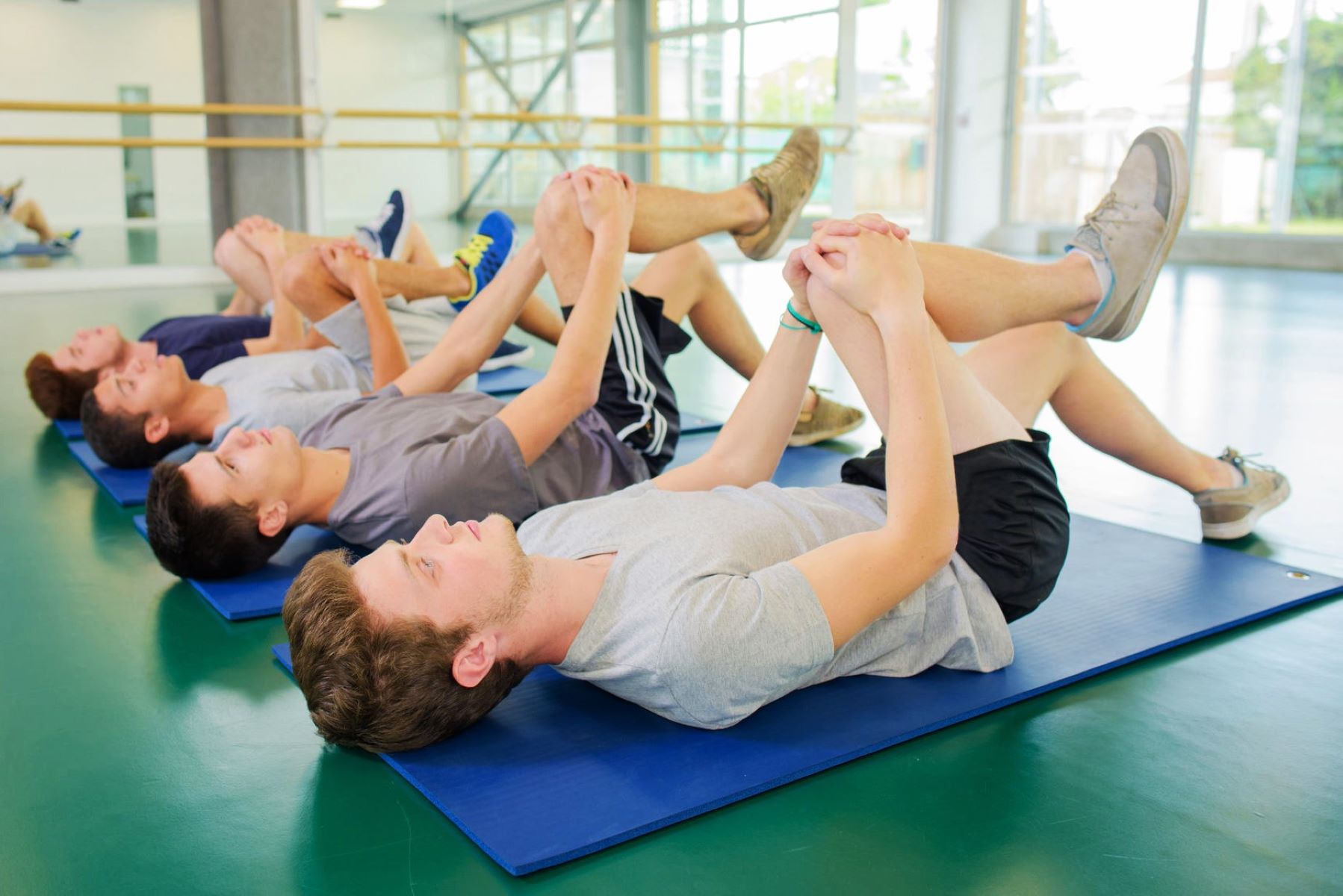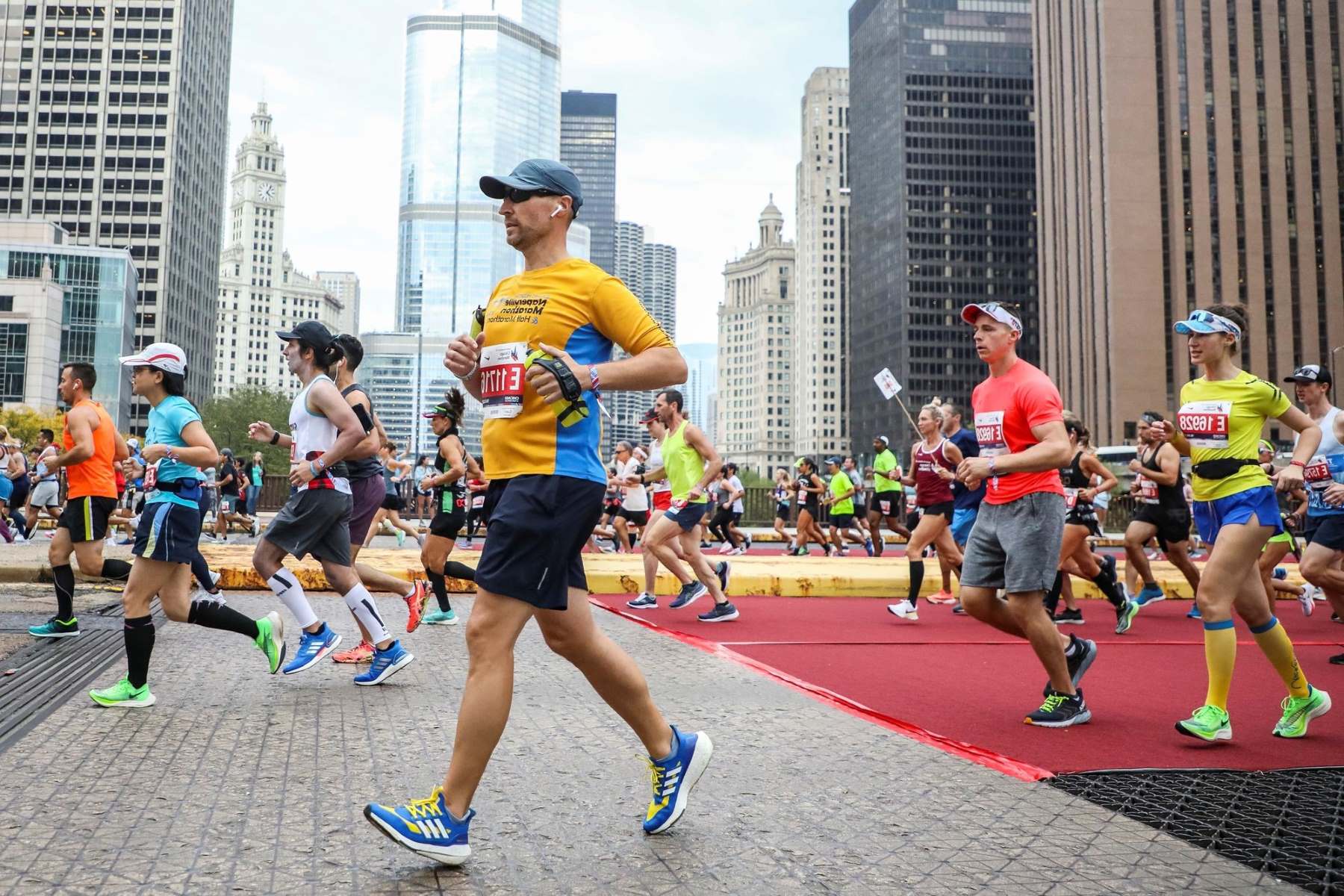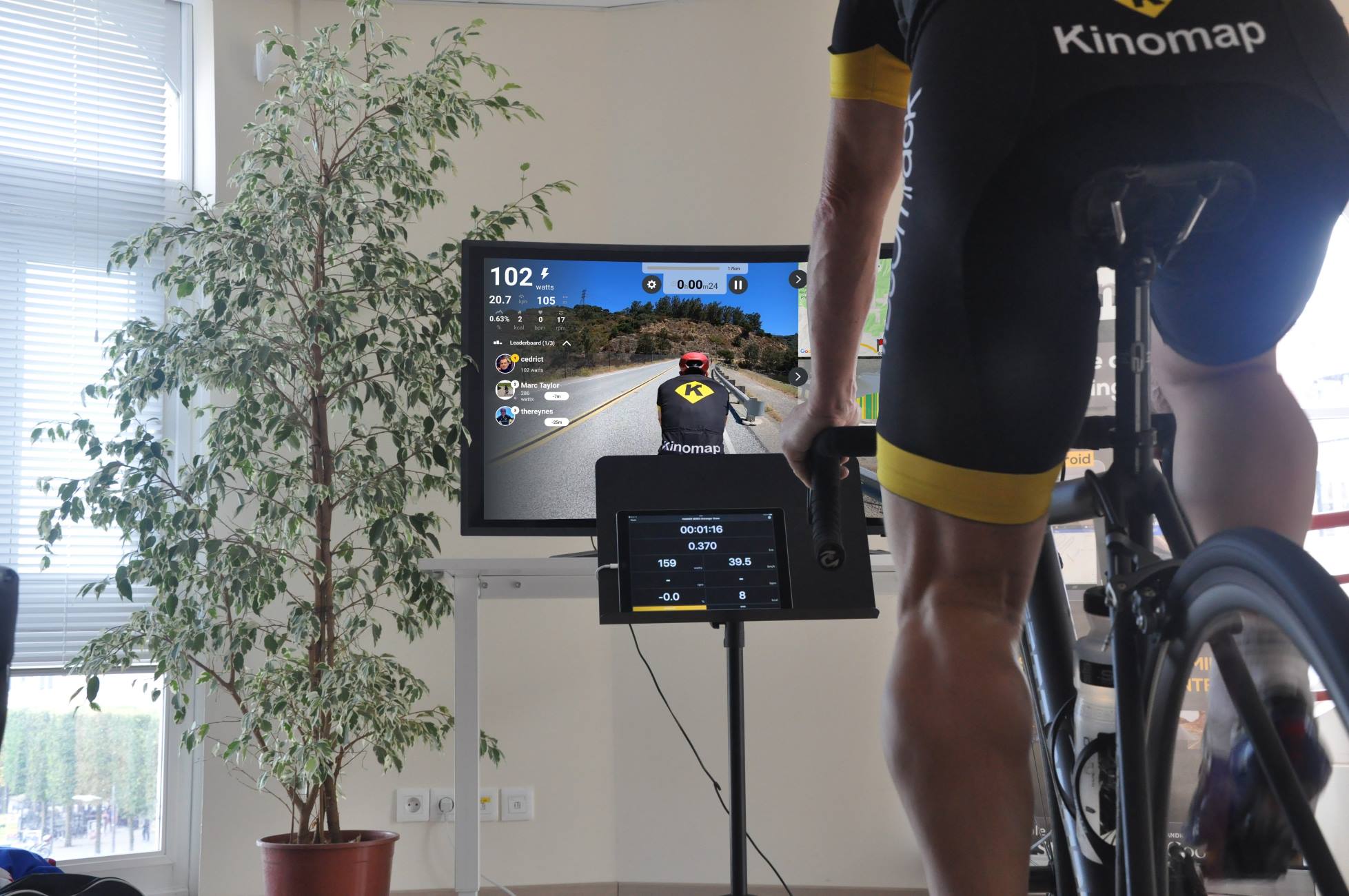Home>Health & Nutrition>Injury Prevention>Symptoms Of Sciatic Nerve Pain And Recommended Exercises For Runners


Injury Prevention
Symptoms Of Sciatic Nerve Pain And Recommended Exercises For Runners
Published: February 25, 2024
Learn about the symptoms of sciatic nerve pain and discover recommended exercises for runners to prevent injury. Stay active and pain-free with these helpful tips.
(Many of the links in this article redirect to a specific reviewed product. Your purchase of these products through affiliate links helps to generate commission for Therunningadvisor.com, at no extra cost. Learn more)
Table of Contents
Understanding Sciatic Nerve Pain
Sciatic nerve pain, also known as sciatica, is a common condition characterized by pain that radiates along the path of the sciatic nerve, which branches from your lower back through your hips and buttocks and down each leg. This type of pain can vary widely, from a mild ache to a sharp, burning sensation or excruciating discomfort.
The most common cause of sciatic nerve pain is a herniated disk in the spine that presses on the nerve. Other causes may include spinal stenosis, a narrowing of the spinal canal, or a bone spur on the spine. Additionally, muscle strain, injury, or infection in the pelvic region can also lead to sciatic nerve pain.
The symptoms of sciatic nerve pain can be debilitating, often affecting one side of the body. Individuals may experience numbness, tingling, or weakness in the affected leg or foot. The pain can worsen when sitting, standing, or walking, and it may be accompanied by a sharp jolt or electric shock-like sensation.
Understanding the underlying causes and symptoms of sciatic nerve pain is crucial for effective management and treatment. It is essential to seek medical evaluation to accurately diagnose the condition and develop a personalized treatment plan. By gaining insight into the nature of sciatic nerve pain, individuals can take proactive steps to alleviate discomfort and prevent exacerbation of the condition.
I have provided a comprehensive overview of sciatic nerve pain, highlighting its causes and symptoms. This information aims to educate readers about the nature of this condition, setting the stage for the subsequent sections of the article. If you need further details or modifications, feel free to let me know.
Common Symptoms of Sciatic Nerve Pain
Sciatic nerve pain manifests in a variety of symptoms that can significantly impact an individual's daily life. Understanding these common symptoms is crucial for early recognition and prompt intervention. The following are the hallmark signs of sciatic nerve pain:
-
Radiating Pain: The most prevalent symptom of sciatic nerve pain is a radiating pain that originates in the lower back or buttock and travels down the back of the thigh. This pain can extend to the calf and foot, following the path of the sciatic nerve. It is often described as a sharp, shooting, or burning sensation, which intensifies with movement.
-
Numbness and Tingling: Individuals with sciatic nerve pain may experience numbness and tingling sensations in the affected leg or foot. This can lead to a loss of sensation or a pins-and-needles feeling, impairing mobility and causing discomfort.
-
Muscle Weakness: Weakness in the leg or foot muscles is a common symptom of sciatic nerve pain. This can manifest as difficulty in lifting the foot or toes, making it challenging to walk or maintain balance.
-
Pain Aggravation: Activities such as sitting, standing, walking, or even sneezing and coughing can exacerbate the pain associated with sciatic nerve compression. The discomfort may intensify during these movements, impacting the individual's ability to perform daily tasks.
-
Lower Back Discomfort: In addition to leg pain, individuals with sciatic nerve pain often experience persistent lower back discomfort. This may be accompanied by stiffness and limited range of motion in the lumbar spine.
-
Sensory Changes: Changes in sensory perception, such as hypersensitivity to touch or a decrease in reflexes, can occur in the affected leg or foot. These sensory alterations are indicative of nerve compression and can contribute to the overall discomfort experienced by individuals with sciatic nerve pain.
Recognizing these common symptoms is essential for early intervention and effective management of sciatic nerve pain. Seeking medical evaluation and exploring appropriate treatment options can alleviate the distress caused by these symptoms and improve the individual's quality of life.
This section provides a detailed overview of the common symptoms of sciatic nerve pain, offering valuable insights for readers seeking to identify and understand this condition. If you require any further adjustments or additions, please feel free to let me know.
How Sciatic Nerve Pain Affects Runners
Sciatic nerve pain can significantly impact runners, hindering their performance and causing considerable discomfort. For individuals who are passionate about running, the effects of sciatic nerve pain can be particularly challenging, as it directly interferes with their ability to engage in this physical activity.
-
Impaired Mobility: Runners with sciatic nerve pain often experience compromised mobility, as the pain and discomfort can impede their ability to move freely. The radiating pain and numbness associated with sciatica can limit the range of motion in the lower back, hips, and legs, making it difficult to maintain proper running form and stride.
-
Reduced Endurance: The persistent pain and discomfort caused by sciatic nerve compression can lead to a significant reduction in endurance for runners. The physical exertion required for running can exacerbate the symptoms, causing fatigue and diminishing the runner's capacity to sustain prolonged periods of activity.
-
Impact on Performance: Sciatic nerve pain can detrimentally impact a runner's performance, affecting their speed, agility, and overall running capabilities. The pain and sensory changes in the lower extremities can disrupt the natural rhythm and coordination essential for efficient running, leading to a decline in performance levels.
-
Risk of Secondary Injuries: Runners with sciatic nerve pain are at an increased risk of developing secondary injuries due to altered biomechanics and gait patterns. Compensatory movements to alleviate pain can place excessive strain on other muscles and joints, potentially leading to overuse injuries and musculoskeletal imbalances.
-
Psychological Impact: The persistent nature of sciatic nerve pain can have a profound psychological impact on runners, causing frustration, anxiety, and a sense of limitation. The inability to engage in their preferred form of physical activity can lead to feelings of isolation and disappointment, affecting their overall well-being.
Understanding the specific ways in which sciatic nerve pain affects runners is crucial for developing targeted interventions and rehabilitation strategies. By addressing the unique challenges faced by runners with sciatica, healthcare professionals can tailor treatment plans to alleviate symptoms, restore mobility, and facilitate a safe return to running activities.
This section provides a comprehensive exploration of how sciatic nerve pain directly influences runners, shedding light on the multifaceted impact of this condition on individuals who are passionate about running. If you have any specific preferences or require further elaboration on this topic, please feel free to let me know.
Recommended Exercises for Alleviating Sciatic Nerve Pain
Engaging in targeted exercises can play a pivotal role in alleviating the discomfort associated with sciatic nerve pain and promoting the restoration of mobility and strength. It is essential to approach exercise regimens with caution, focusing on movements that gently stretch and strengthen the muscles surrounding the sciatic nerve without exacerbating the symptoms. Here are some recommended exercises that can effectively mitigate sciatic nerve pain:
-
Piriformis Stretch: The piriformis muscle, located in the buttocks, can contribute to sciatic nerve compression when tight or inflamed. Performing a piriformis stretch involves lying on your back, crossing one leg over the other, and gently pulling the knee toward the opposite shoulder. This stretch targets the piriformis muscle, helping to alleviate pressure on the sciatic nerve.
-
Hamstring Stretch: Tight hamstrings can exacerbate sciatic nerve pain by placing additional strain on the lower back and pelvis. A seated or standing hamstring stretch involves extending one leg in front of you with a straight knee and gently leaning forward from the hips, feeling a gentle stretch in the back of the thigh. This stretch helps to release tension in the hamstrings, reducing pressure on the sciatic nerve.
-
Child's Pose: This yoga-inspired stretch is beneficial for elongating the spine and relieving pressure on the sciatic nerve. Begin on your hands and knees, then lower your hips back toward your heels while reaching your arms forward, allowing your forehead to rest on the floor. The gentle traction created by the stretch can alleviate discomfort in the lower back and hips.
-
Pelvic Tilts: Pelvic tilting exercises help to stabilize the pelvis and strengthen the core muscles, which can alleviate pressure on the sciatic nerve. Lie on your back with knees bent, then gently rock your pelvis back and forth, engaging the abdominal muscles. This movement promotes pelvic alignment and supports the lower back, reducing strain on the sciatic nerve.
-
Sciatic Nerve Flossing: Nerve flossing exercises involve gentle, rhythmic movements that mobilize the sciatic nerve, promoting improved flexibility and reducing nerve compression. While lying on your back, gently flex your foot and then extend the leg, feeling a subtle stretch along the back of the leg. This exercise helps to release tension and enhance nerve mobility.
Incorporating these recommended exercises into a comprehensive rehabilitation program can contribute to the effective management of sciatic nerve pain. It is crucial to approach these exercises mindfully, gradually increasing intensity and duration as tolerated, while being attentive to any signs of discomfort or exacerbation of symptoms. Consulting with a healthcare professional or a qualified physical therapist can provide personalized guidance and ensure that the exercise regimen aligns with individual needs and limitations.
This section provides a detailed overview of recommended exercises for alleviating sciatic nerve pain, offering valuable insights for individuals seeking targeted interventions to manage their symptoms. If you have any specific preferences or require further elaboration on this topic, please feel free to let me know.
Precautions for Runners with Sciatic Nerve Pain
Runners with sciatic nerve pain require specific precautions to safeguard their well-being and prevent exacerbation of symptoms. It is essential to approach running activities with mindfulness and consideration for the unique challenges posed by sciatica. Here are crucial precautions that runners with sciatic nerve pain should adhere to:
-
Consultation with Healthcare Professionals: Prior to resuming or initiating a running regimen, runners with sciatic nerve pain should seek guidance from healthcare professionals, such as orthopedic specialists, physical therapists, or sports medicine practitioners. A comprehensive evaluation can help determine the severity of the condition, identify potential risk factors, and establish personalized recommendations for safe running practices.
-
Gradual Return to Running: It is imperative for runners with sciatica to adopt a gradual and progressive approach when reintroducing running activities. This involves starting with shorter distances and lower intensities, allowing the body to adapt and minimize the risk of aggravating the sciatic nerve. Incremental increases in running duration and intensity should be carefully monitored to gauge the body's response and tolerance.
-
Focus on Proper Form and Technique: Emphasizing proper running form and technique is essential for runners with sciatic nerve pain. Maintaining a neutral spine, engaging core muscles, and optimizing foot strike patterns can help distribute impact forces more evenly, reducing strain on the lower back and pelvis. Additionally, incorporating adequate warm-up and cool-down routines can prepare the body for running and facilitate post-activity recovery.
-
Mindful Monitoring of Symptoms: Runners with sciatica should remain vigilant in monitoring their symptoms during and after running sessions. Any exacerbation of pain, numbness, or weakness in the lower back, hips, or legs should be promptly addressed. It is crucial to differentiate between normal exertion-related discomfort and symptoms indicative of heightened nerve compression or tissue irritation.
-
Incorporation of Cross-Training Activities: To mitigate the impact of running on the sciatic nerve, runners can integrate cross-training activities such as swimming, cycling, or low-impact aerobics into their fitness routines. These activities provide cardiovascular benefits while minimizing the repetitive impact and loading on the lower extremities, offering a balanced approach to physical conditioning.
-
Adherence to Individualized Limits: Understanding and respecting individual physical limitations is paramount for runners with sciatic nerve pain. This involves acknowledging the body's signals and adjusting running parameters accordingly. It is essential to prioritize comfort and well-being, refraining from pushing beyond tolerable thresholds that may exacerbate the condition.
By adhering to these precautions, runners with sciatic nerve pain can navigate their running pursuits with greater awareness and consideration for their specific needs. These measures aim to promote safe and sustainable engagement in running activities while minimizing the potential impact on the underlying sciatic nerve pathology. Seeking ongoing guidance from healthcare professionals and maintaining open communication regarding any changes in symptoms are integral components of this proactive approach.
This section provides comprehensive precautions tailored to runners with sciatic nerve pain, offering practical insights for navigating running activities while prioritizing their physical well-being. If you have any specific preferences or require further elaboration on this topic, please feel free to let me know.
















